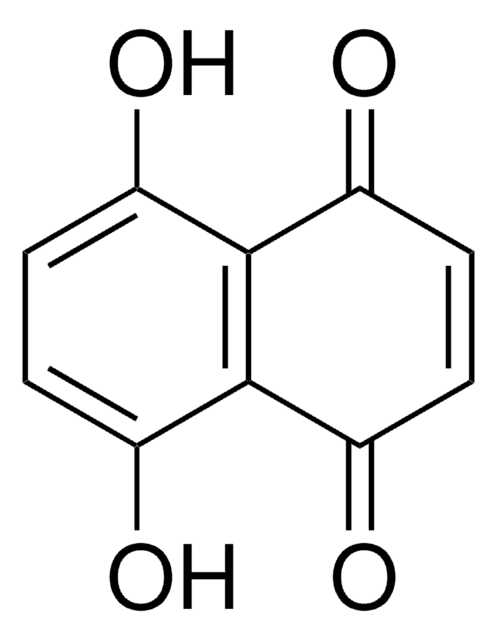420120
Juglone
A highly selective cell-permeable, irreversible inhibitor of PPlases (peptidyl-prolyl cis/trans isomerases of the parvulin family).
Synonym(s):
Juglone, 5-Hydroxy-1,4-naphthlenedione, 5-Hydroxy- p-naphthoquinone
About This Item
Recommended Products
Quality Level
description
Merck USA index - 14, 5269
assay
≥95% (HPLC)
form
solid
manufacturer/tradename
Calbiochem®
storage condition
OK to freeze
protect from light
color
orange
solubility
DMSO: 10 mg/mL
ethanol: 10 mg/mL
shipped in
ambient
Storage temp.
2-8°C
General description
Biochem/physiol Actions
PPlases (peptidyl-prolyl cis/trans isomerases of the parvulin family)
Packaging
Warning
Reconstitution
Other Notes
Hennig, L., et al. 1998. Biochemistry37, 5953.
Legal Information
signalword
Danger
hcodes
Hazard Classifications
Acute Tox. 3 Oral
Storage Class
6.1C - Combustible acute toxic Cat.3 / toxic compounds or compounds which causing chronic effects
wgk_germany
WGK 3
Certificates of Analysis (COA)
Search for Certificates of Analysis (COA) by entering the products Lot/Batch Number. Lot and Batch Numbers can be found on a product’s label following the words ‘Lot’ or ‘Batch’.
Already Own This Product?
Find documentation for the products that you have recently purchased in the Document Library.
Our team of scientists has experience in all areas of research including Life Science, Material Science, Chemical Synthesis, Chromatography, Analytical and many others.
Contact Technical Service








